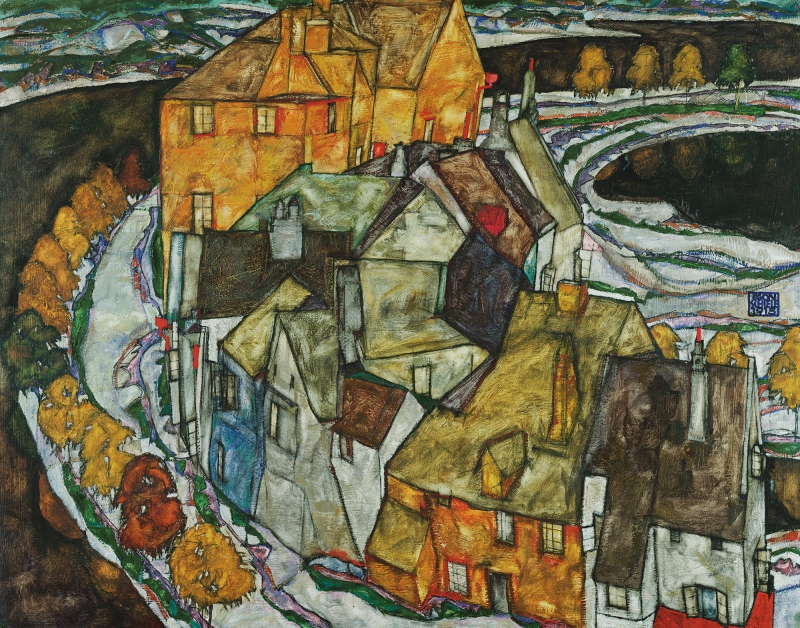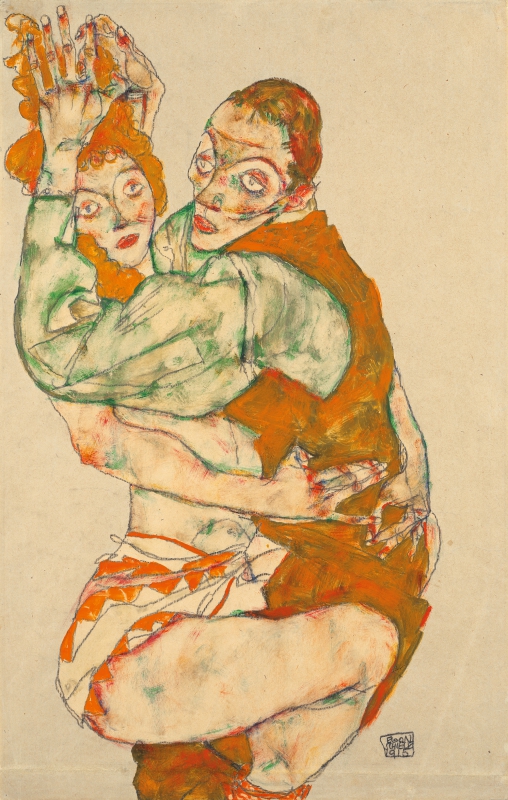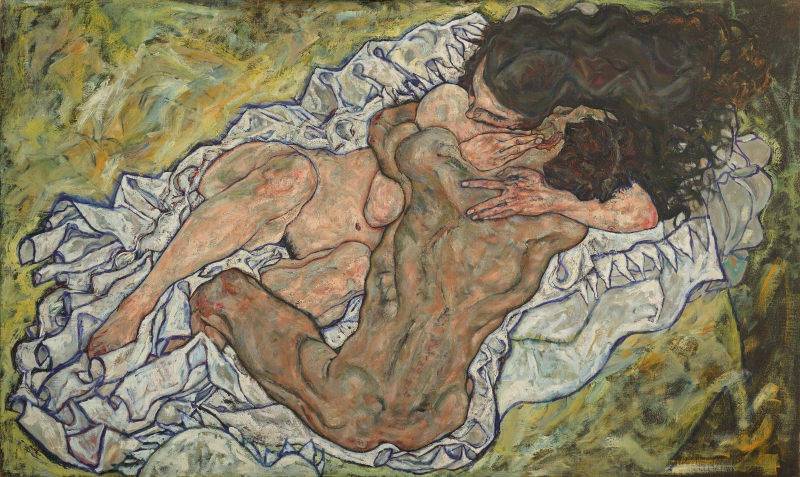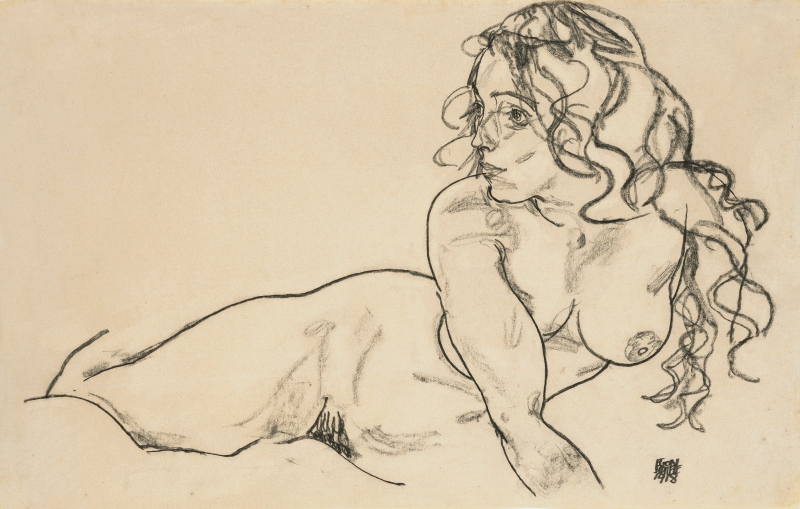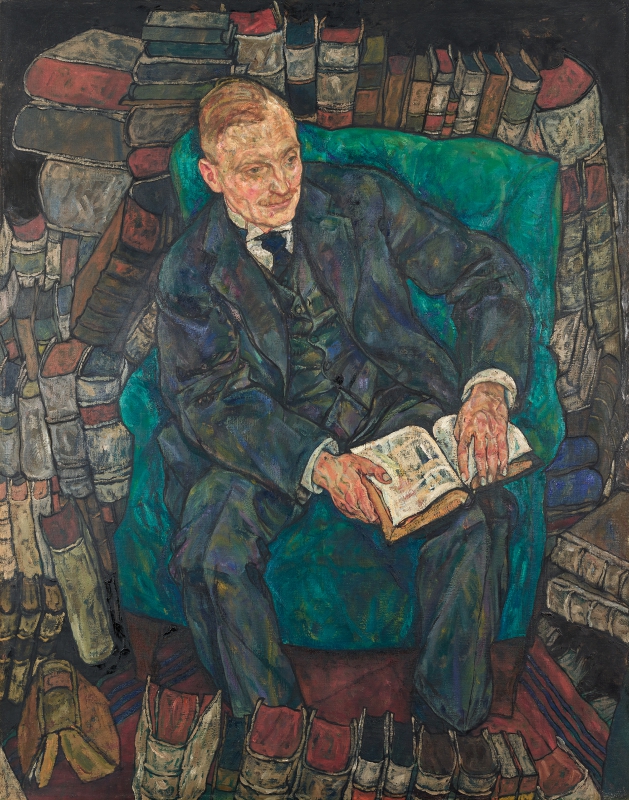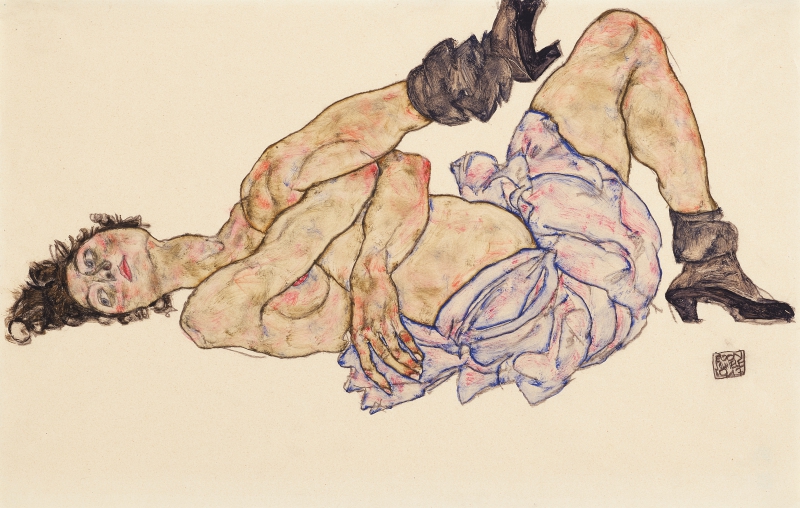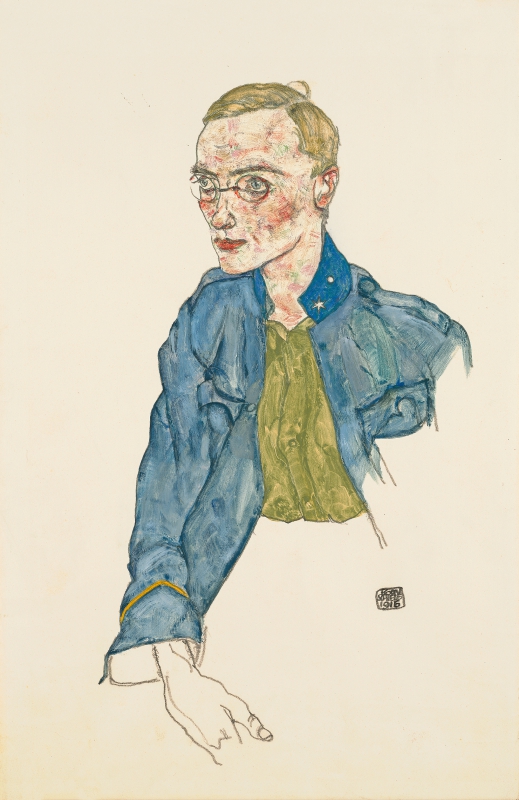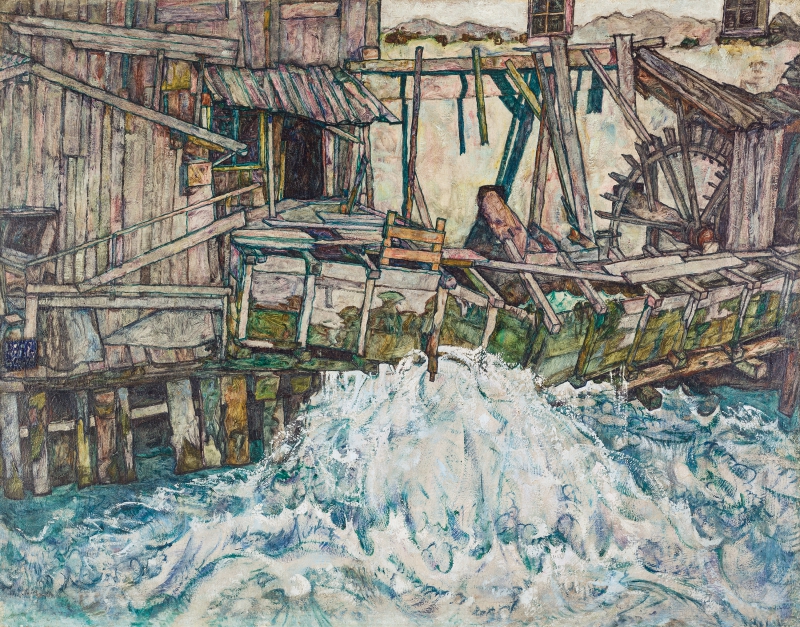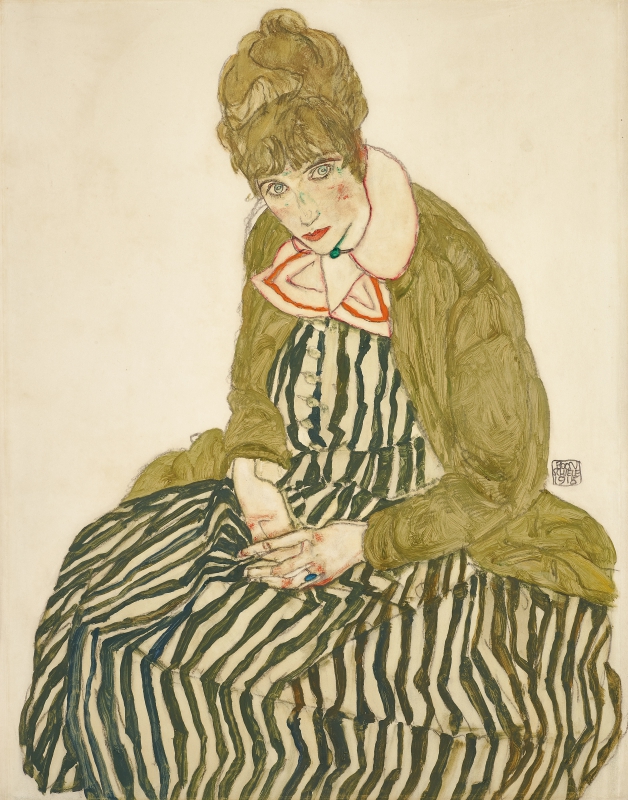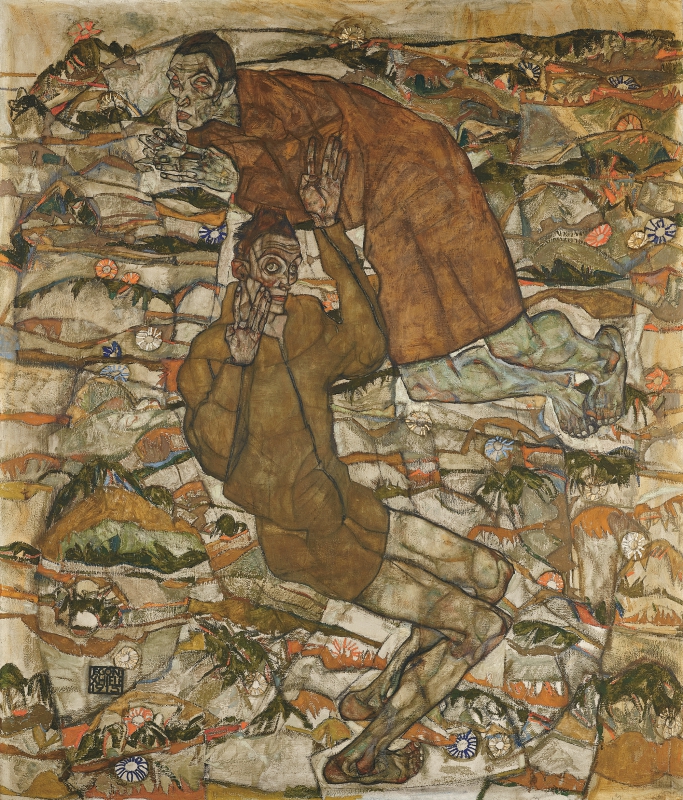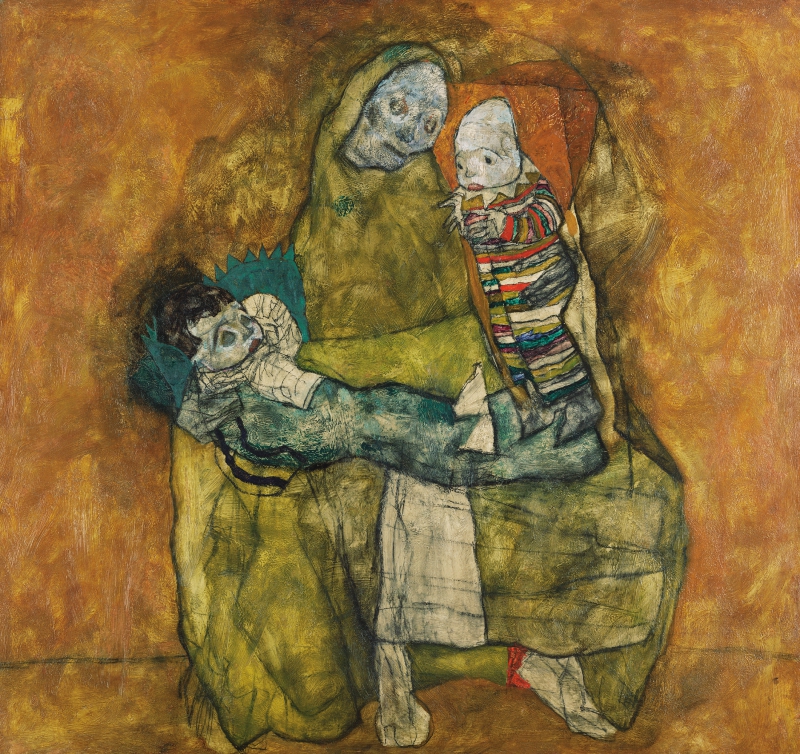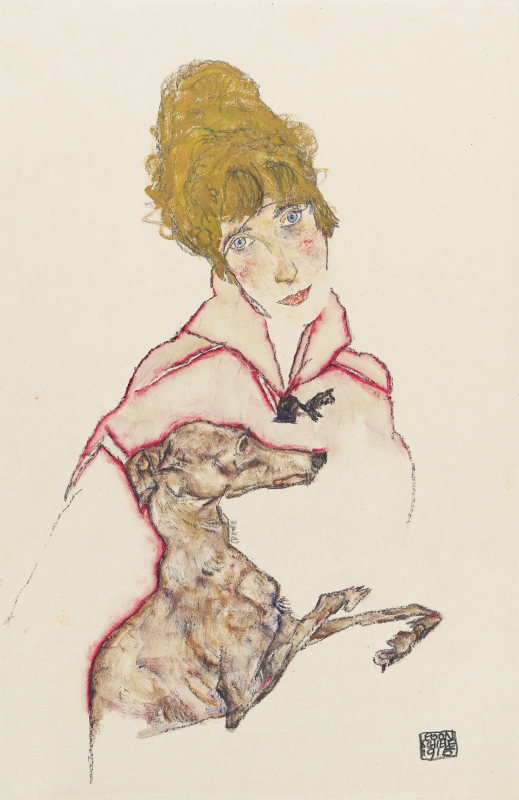28th March–13th July 2025
This spring, the Leopold Museum is dedicating a large-scale monographic exhibition to the central artist of the Leopold Collection, Egon Schiele (1890–1918). Changing Times. Egon Schiele’s Last Years: 1914–1918 is the first presentation to shine the spotlight on the artist’s late oeuvre. The eccentric exceptional artist only had around ten years of activity before he died at the age of 28 from the “Spanish Flu”. Throughout this decade, Schiele created a comprehensive oeuvre, which is best known for his key paintings and the drawings he realized between 1910 and 1913, in which he addressed his own mental states as well as the self-questioning and inner conflicts of an entire generation. From 1914, right in the middle of his professional career, Schiele faced dramatic changes both of a private and historical nature, which he was forced to adapt to and which impacted on his oeuvre. His previous introspection gave way to a new focus on external realities and novel themes, altering his artistic style.
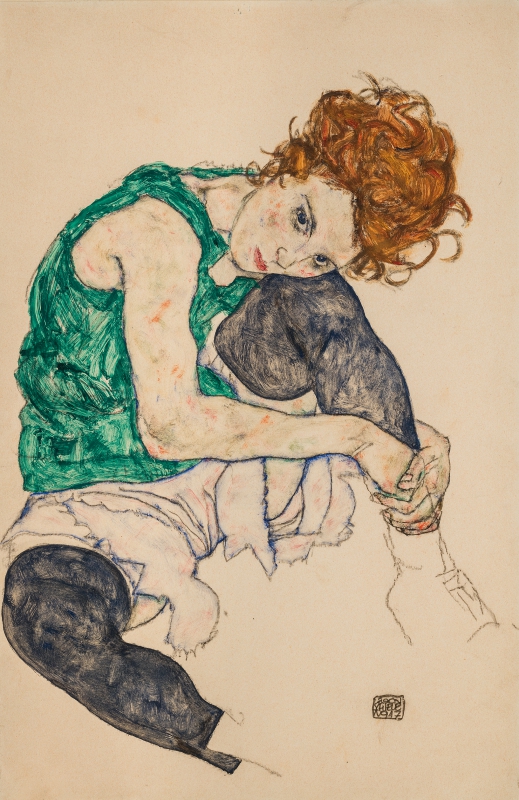
Egon Schiele, Seated Woman with Bent Knee, 1917 © National Gallery Prague, Photo: National Gallery Prague 2025
Egon Schiele, Crescent of Houses II (Island Town), 1915 © Leopold Museum, Vienna, Photo: Leopold Museum, Vienna
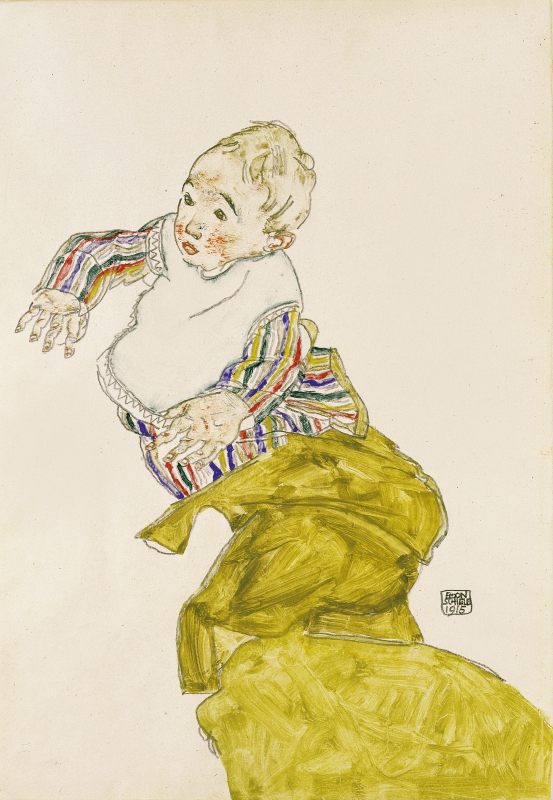
Egon Schiele, Baby (Anton Peschka Jr.), 1915 © The Kallir Family Foundation, New York City, Photo: Image courtesy Kallir Research Institute, New York City
Egon Schiele, Coitus, 1915 © Leopold Museum, Vienna, Photo: Leopold Museum, Vienna
Egon Schiele, Embrace (Lovers II), 1917 © Belvedere, Vienna, Photo: Belvedere, Vienna/Johannes Stoll
Egon Schiele, Reclining Female Nude with Long Hair, 1918 © Leopold Museum, Vienna, Photo: Leopold Museum, Vienna
